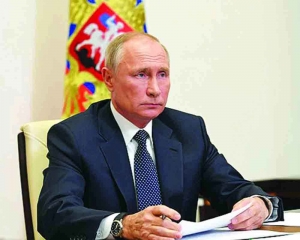India’s position on the global migration map is unique as it sustains considerable volumes of internal migration, emigration and immigration, alongside involuntary migration generated as a reaction to developmental activities, writes Chinmay Tumbe
“An ideal society should be mobile, should be full of channels for conveying a change taking place in one part to other parts.”
— Bhimrao Ramji Ambedkar
Ambedkar’s view on migration was deeply conditioned by his own experience, of breaking away from the traditional shackles of caste in India, earning respect and dignity while studying at Columbia University and london School of Economics, and his numerous travels. For him, migration was intimately linked with his personal development and aspirations. He famously called the Indian village a “sink of localism, a den of ignorance, narrowmindedness and communalism”. In contrast, Gandhi, who had lived outside India for over two decades, celebrated village life and shunned modern cities. He considered the “growth of cities as an evil thing, unfortunate for mankind and the world”. A third character in 20th century Indian politics — Bal Thackeray (1926-2012) — viewed migration as a potential source of conflict with native interests. While he was born in Pune, it is significant that he spent nearly his entire life in Mumbai, a city whose name he got changed.
Ambedkar and Thackeray reflect two ends of the spectrum between cosmopolitanism and nativism. The widely travelled cosmopolitan considers migration to be the norm, while the rarely travelled nativist sees it as an aberration. Gandhi added a third dimension, that of the cosmopolitan recommending fixity. These three views summarise the range of views towards migration across the world and they are intrinsically linked with the process of ‘development’ or the general rise in living standards. For the question each is asking is: Whose living standards are being raised by migrationIJ
Migration in Transitions
‘Development’, used here as a term to reflect rising per capita incomes and human capital in education and health, has been associated with the scientific, political, economic, urban and demographic revolutions or transitions of the modern world. The scientific revolution led to the creation of technologies that transformed the scale of production, transportation, and communication. The political transition refers to the transition from autocracy to democracy, often via the status of being a colonising or colonised state. The economic transition manifested itself in the dramatic diversification of economic activity away from agriculture in capitalist, socialist, and communist systems. Economic development was also closely linked with urbanisation or a spatial shift away from villages to cities as the global share of population living in urban areas crossed 50 per cent in the first decade of the 21st century. Finally, every society underwent, or is undergoing, the demographic transition from high death and birth rates to low death and birth rates.
It was once thought that a similar ‘mobility transition’ accompanied this process of development, from low rates to high rates and from nomadic to settler, and finally circulatory streams of migration. Careful historical research has shown that mobility rates in the Eurasian world before 1800 CE were not as low as was previously thought and that mobility rates fell from the highs of the late 19th and early 20th century in many ‘developed’ societies. Circular migration for work and military migration have also been documented as a major driving force of migration in those societies in recent centuries. What has been noted for sure is the distinct phase of urbanisation and demographic transition whereby natural growth rates — the difference between birth and death rates — tend to increase and place pressure on available agricultural land leading to a movement away from villages.
For many countries in western and southern Europe, this movement took place in the cities and settlements in the Americas and colonies around the world. As these societies have completed their demographic transitions and face low or even negative natural growth rates, they tend to attract immigrants, especially in the low-end jobs vacated by the natives. Wage differentials form an important part of this narrative as they signal opportunities for people to move. Thus, relatively more developed countries and major cities tend to have net immigration or inmigration rather than net emigration or outmigration as they offer higher wages. The historical experience of migration in India follows some of these broad patterns, but with interesting twists. Migration has been highly circulatory and clustered in nature. Certain parts of India have experienced mass migration histories for centuries, while other regions have been bypassed or have only recently witnessed signs of rising spatial mobility. Science and technology mattered in terms of the railways, steamboats and communications services that propelled spatial mobility in the late 19th century.
Mobility in India — internal and international — also closely followed the logic of globalisation, rising in the late 19th and early 20th century and then again towards the end of the 20th century. In this, the colonial experience was critical in shaping the initial surge in outmigration and the choice of destinations, with persistent legacies. Patterns of migration broadly followed economic development, with the more developed and fast-growing states or provinces experiencing net inmigration rather than outmigration.
Democracy in independent India continued the earlier ideas of unrestricted spatial movement, with a few caveats, in stark contrast to communist China, which regulated rural-urban migration through an internal permit system known as the hukou. And yet, over the past four decades, the relatively higher pace of economic growth in China propelled a much larger volume of internal migration than in India, taking Chinese urbanisation rates past 50 per cent. In comparison, India’s urbanisation rate rose gradually to a little over 30 per cent. At first glance, this may reflect low rates of spatial mobility, but this artefact has more to do with definitions and rural-urban divergence in natural growth rates.
India’s demographic transition began slowly in the first half of the 20th century and natural growth rates peaked in the 1980s, but curiously since the 1970s, rural natural growth rates outstripped urban natural growth rates and dampened the process of urbanisation. Even then, India is unique in having a large economic diversification taking place from agricultural to non-agricultural activities within rural areas themselves as cities have not been able to provide enough jobs for the rural poor.
The most remarkable aspect of Indian migration concerns itself with international migration. Standard development theory would predict India to be a country of net emigration and yet, since Independence, emigration has been balanced by immigration from the relatively poorer neighbouring countries of Nepal and Bangladesh. In every decade between 1971 and 2011, India was, in fact, a country of net immigration.
Excerpted with permission from Penguin

























